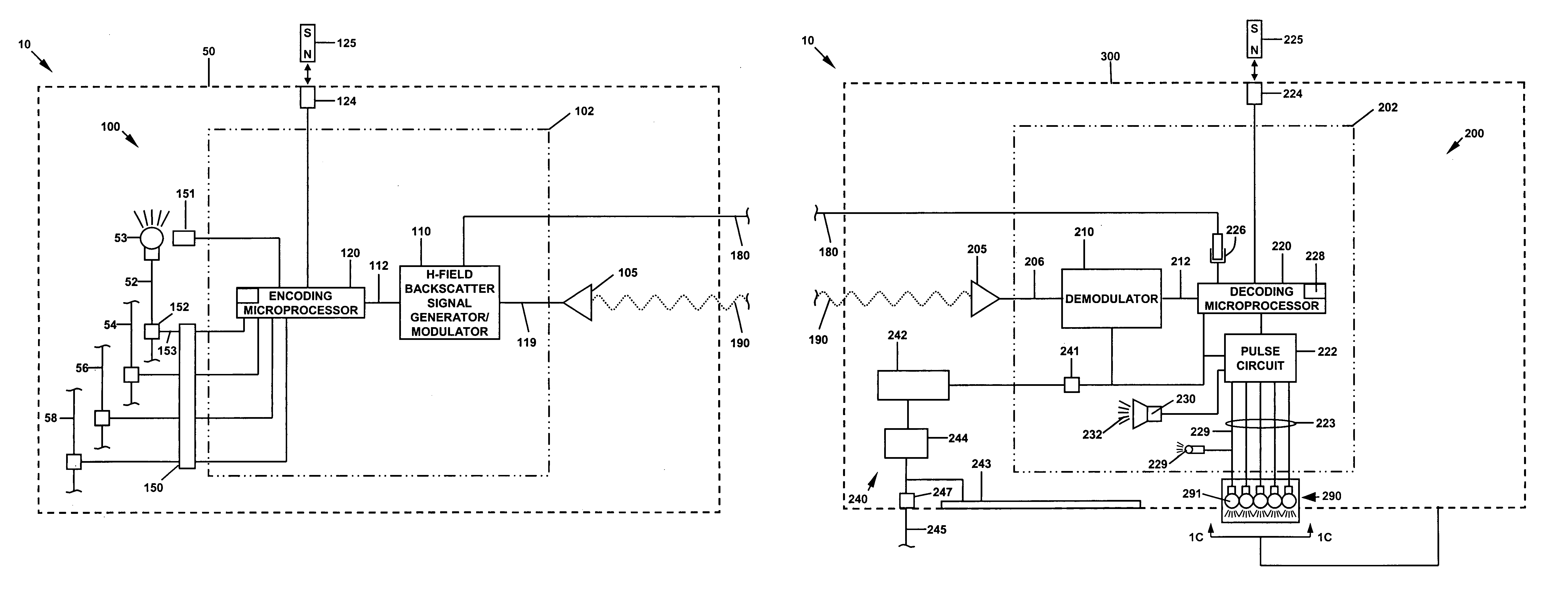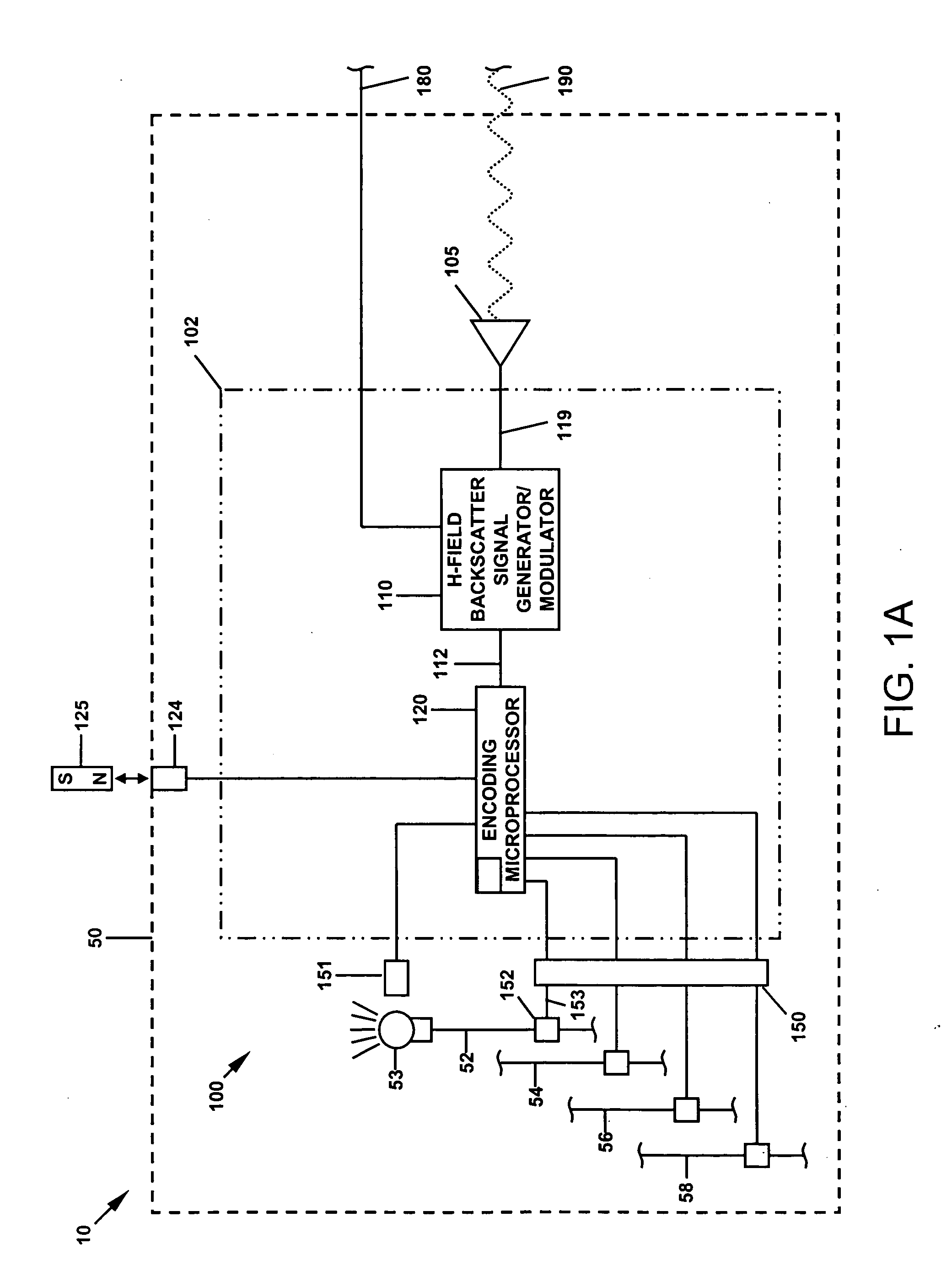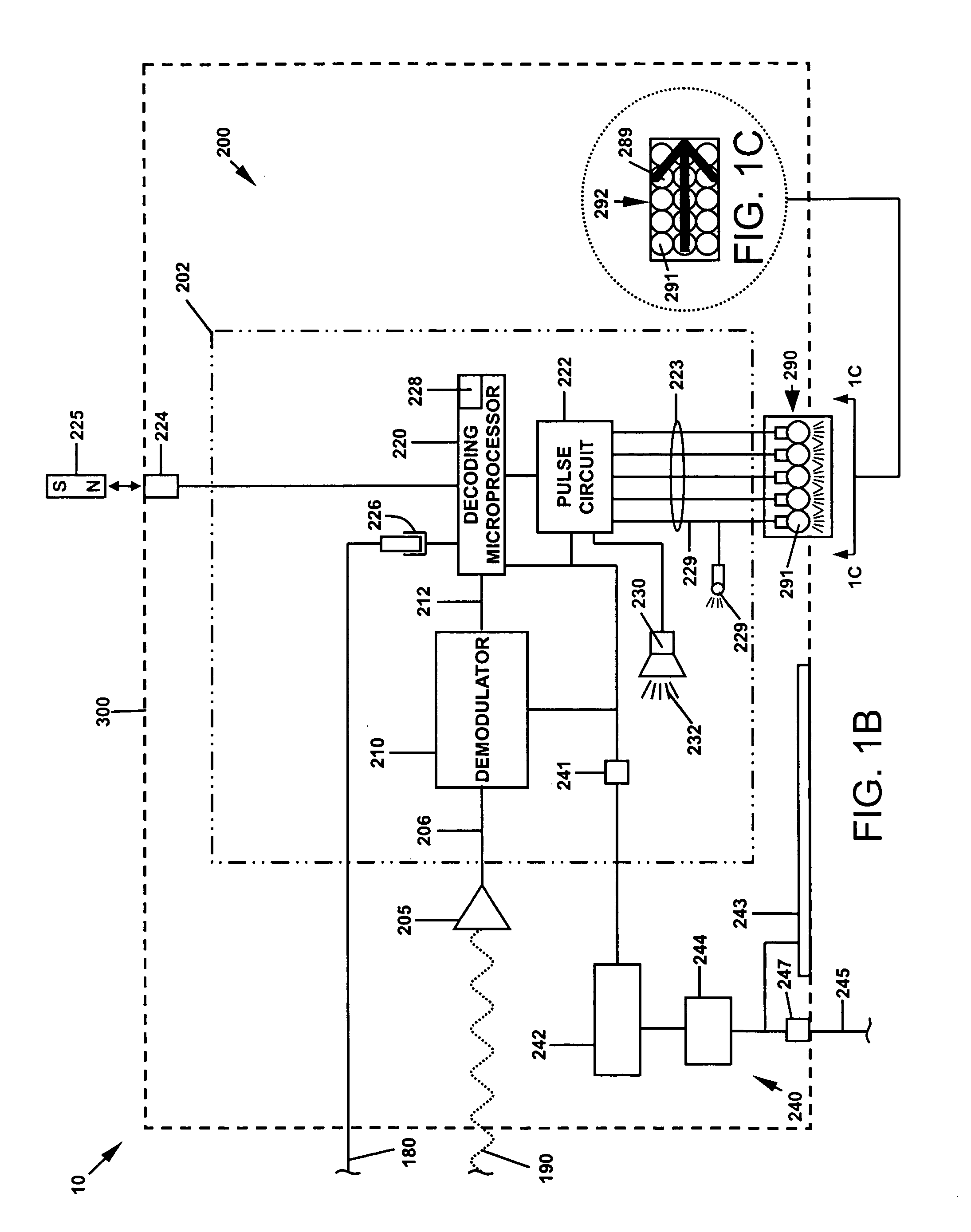Auxiliary safety light system
a safety light and auxiliary technology, applied in the direction of burglar alarm mechanical actuation, electric signalling details, instruments, etc., can solve the problems of high safety risks associated with riding a motorcycle, other motorists often lose track of the position of a nearby motorist, and other motorists have a hard time seeing motorcycles on the road. , to achieve the effect of enhancing the safety of the rider, reducing the space of components, and low power consumption
- Summary
- Abstract
- Description
- Claims
- Application Information
AI Technical Summary
Benefits of technology
Problems solved by technology
Method used
Image
Examples
Embodiment Construction
[0046] For a general understanding of the present invention, reference is made to the drawings. In the drawings, like reference numerals have been used throughout to designate identical elements.
[0047] As used herein, the term “H-field backscatter generator” is meant to indicate a VLF (very low frequency) oscillator that produces low-frequency electromagnetic radiation in all directions.
[0048] Backscatter communication device and method technology has advanced considerably. For example, one may refer to U.S. Pat. No. 6,600,905 of Greef et al., “Communication system, interrogators and communication methods;” U.S. Pat. No. 6,466,771 of Wood, “Wireless communication system, radio frequency communications system, wireless communications method, radio frequency communications method, and backscatter radio frequency communications system;” and U.S. Pat. No. 6,459,726 of Ovard et al., “Backscatter interrogators, communication systems and backscatter communication methods,” the disclosure...
PUM
 Login to View More
Login to View More Abstract
Description
Claims
Application Information
 Login to View More
Login to View More - R&D
- Intellectual Property
- Life Sciences
- Materials
- Tech Scout
- Unparalleled Data Quality
- Higher Quality Content
- 60% Fewer Hallucinations
Browse by: Latest US Patents, China's latest patents, Technical Efficacy Thesaurus, Application Domain, Technology Topic, Popular Technical Reports.
© 2025 PatSnap. All rights reserved.Legal|Privacy policy|Modern Slavery Act Transparency Statement|Sitemap|About US| Contact US: help@patsnap.com



